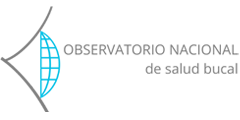It connects a company’s sales data to income accounts and balance sheets. Although the method cannot provide accurate figures, it still offers businesses an effective way to understand their short-term future from a financial standpoint. The percentage of sales method predicts future finances based on current revenue. It looks at financial items like the cost of goods sold (COGS) and accounts receivable as a percentage of your total sales. This information about past sales data helps you predict future financial performance. This forecasting method uses estimated overarching sales growth to determine changes to any financial line items that directly correlate to sales.
Divide your line item amounts by the total sales revenue amount to get your percentage. By no means is meant to be hailed as a definitive document of every aspect of your company’s financial future. Learn how to use the sales revenue formula so you can gauge your company’s continued viability and forecast more accurately. To calculate your potential bad debts expense (BDE), simply multiply your total credit sales by the percentage you anticipate losing. Liz’s final step is to use the percentages she calculated in step 3 to look at the balance forecasts under an assumption of $66,000 in sales.
Calculate forecasted sales.
Understanding and utilizing the Percent of Sales Method can help learners and professionals alike make informed and strategic business decisions. It is one of the fastest to prepare a company’s financial forecast. Moreover, the technique can offer high-quality estimates for items that closely correlate with sales.
And second, it can yield high-quality forecasts for those items that closely correlate with sales. As helpful as the percentage of sales method can be for financial projections, it’s not an all-in-one forecasting solution. Using data mined from your CRM — along with more in-depth forecasting methods — can help you make more consistent, accurate forecasts. She decides she wants to put together a rough financial forecast for the future, so she opts to leverage the percent of sales method. Now that she has the relevant initial figures, she can move on to the next step. Best practices when using the Percentage of Net Sales Method include regularly monitoring sales figures and inventory levels to ensure accurate reporting and compliance with tax regulations.
Benefits of the percentage-of-sales method
However, the company’s net income is negative if that is not the case. The percentage of receivables method is similar to the percentage of credit sales method, except that it looks at percentages over smaller time frames rather than a flat rate of BDE. The downside to using the Percentage of Net Sales Method is that it can be subject to manipulation if sales figures are not properly monitored or reported accurately. Additionally, it does not take into account unearned revenue definition changes in inventory costs over time or fluctuations in the demand for certain products. The balance in this account will always be a function of a predetermined percentage of credit sales when the net-sales method is used.
The percentage of sales method is a forecasting tool that makes financial predictions based on previous and current sales data. This data encompasses sales and all business expenses related to sales, including inventory and cost of goods. The Percent of Sales Method is a valuable tool for businesses looking to forecast expenses and revenues efficiently. By using historical data to establish consistent percentages, companies can create realistic and manageable financial plans. While the method is simple and easy to apply, it’s essential to be aware of its limitations and complement it with other forecasting techniques for a comprehensive financial strategy.
Less Accurate for Fast-Growing Businesses
Larger companies allow for a certain percentage of bad credit in their financial analysis, but many small businesses don’t, and it can lead to unrealistic projections and unforeseen loss. If her sales increase by 10 percent, she can expect your total sales value in the upcoming month to be $66,000. Next, Liz needs to calculate the percentage of each account in reference to her revenue by dividing by the total sales.
Balance sheet items
The accounts receivable to sales ratio measures a company’s liquidity by determining how many sales are happening on credit. The business could run into short-term cash flow problems if the ratio is too high. For this reason, it’s an important additional ratio to consider when running a percentage of the sales forecast. Because the percentage-of-sales method works closely with data from sales items, it’s not the best forecasting method for things like fixed assets or expenses.
- Businesses can determine how much (approximately) they can earn or lose in all accounts by taking the revenue percentage relevant to every account and applying it to the forecast number.
- This allows you to adjust budgets, strategies, and resourcing to ensure you hit desired targets.
- For information pertaining to the registration status of 11 Financial, please contact the state securities regulators for those states in which 11 Financial maintains a registration filing.
- This is not a good sign, but keep in mind this method is a starting point for financial statement analysis.
- Before making predictions regarding financial health, businesses must accumulate data concerning their expenses and sales.
Businesses utilize the results of this technique to make necessary adjustments for the future depending on the financial outlook. That said, one must note trial balance rules that businesses cannot predict fixed using this tool. Ultimately, the percent of sales method is a convenient but flawed process of financial forecasting. For the percentage-of-sales method to yield accurate forecasts, it is best to apply it only to selected expenses and balance sheet items that have a proven record of closely correlating with sales. Outside of these items, it is better to develop a detailed, line-by-line forecast that incorporates other factors than just the sales level. This more selective approach tends to yield budgets that more closely predict actual results.

